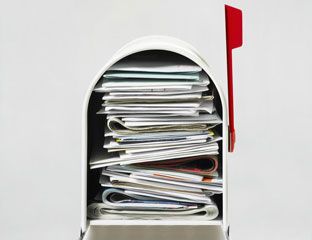How to do housekeeping in your Shared Hosting Mailbox?
For Outlook users, make sure you DO NOT tick “leave a Copy in the server”. If you still need this option, you can Tick and leave a copy, but choose the option “REMOVE the mails after 8 days” – for housekeeping purposes.
For Webmail users, make sure you log in to Webmail and delete big-sized or unused emails.
How to do housekeeping in your Outlook Mailbox?
If you’re an Outlook user, to do mailbox housekeeping, you might need to reduce and re-optimize your mailbox. If so, here are some tips for you.
5 Tips to Reduce The Outlook Mailbox Size

Are you constantly getting messages from your system administrator saying you need to reduce the Microsoft Outlook mailbox size? It is struggling for most of us as the cleaning process takes a lot of time. Now try out these tips to get a faster, more organized approach to keep your mailbox smaller and easier to work with.
Note: Before you start, please take some time to backup your Outlook.pst file (with a stand-alone version). It is usually found under the Outlook Files folder in Documents.
Besides, please note that the following steps only apply to Microsoft Outlook 2016, Outlook 2013, and Outlook 2010.
1. Cleaning Up Your Mailbox
- First, start by choosing the View Mailbox Size option. It helps to scan your mailbox size and all subfolders size. This is a great way to target because these folders are the biggest contributors to your large mailbox. Thus you should clean these up first.
When connecting to Exchange, you’ll see the tab Local Data and Server Data. Only look at the Local Data tab. Then the cleanup changes you make will automatically take place on the server as well. - After that, pick the options to Find older or larger items which you can delete directly from the results to cleanup the Outlook mailbox size.
- Depending on your archive settings (you can see the Archive Older Messages below), you can run an AutoArchive.
- Finally, check the size of the Deleted Items folder and Empty the folder if you want.
2. Move the Messages to Your Personal Folders
If you’re accessing Outlook from Exchange, you can reduce the Outlook mailbox size by moving Outlook items to your Personal Folders. However, this option may not be available to you as many organizations have moved away from supporting Personal Folders.
Although the messages you move to Personal Folders are no longer counted in your mailbox size, the Personal Folders file (outlook.pst) is still in your local hard drive and is not accessible remotely. Therefore, you should also back up this file. This is to prevent losing these Outlook items when the computer goes down or is updated. If you are running a standalone version of Outlook, your email, calendar, tasks, and notes are all stored in the outlook.pst file (or .ost file-offline). The file has a size limit of 50GB (Outlook 2019, 2016, 2013 & 2010).
3. Archive Older Messages from Your Mailbox
4. Empty the Deleted Items
Other than that, you can instantly clean up your deleted items by automatically emptying the Deleted Items folder when you exit Outlook. To apply this, choose the File > Options > Advanced tab. After that, from the Outlook start and exit option, check the Empty Deleted Items folder when exiting Outlook and OK.
To manually clear the items in the folder, right-click the Deleted Items folder and click Empty Folder on the shortcut menu (Empty “Deleted Items” Folder for Outlook 2010). Please note that you cannot reverse the action once you clear deleted items. So, make sure you feel confident that you want to delete a message forever. Instead of pressing the [Delete] key, bypass the Deleted Items folder by pressing [Shift] + [Delete] for a selected item. Then, confirm the delete process.
5. Save and Remove Attachments
- First of all, open the message.
- Secondly, right-click on the attachment and then pick Save All Attachments. Or you can select Actions from the Message tab. After that, pick Other Actions > Save All Attachments.
- Next, locate and select the folder where you want to save the file/ files and pick Save.
- Once you have saved the attachment, you may delete the message. If you would like to keep the message, simply remove the attachments from a message by right-clicking them and choosing Remove.



